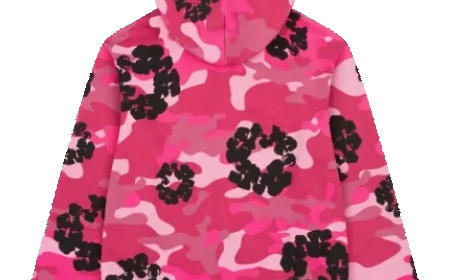Top 10 Miami Spots for Street Photography
Top 10 Miami Spots for Street Photography You Can Trust Miami is a city that pulses with color, rhythm, and raw human energy. From the sun-drenched sidewalks of South Beach to the gritty alleyways of Little Havana, every corner tells a story. But not all locations are created equal when it comes to street photography. While some spots offer dazzling visuals, others come with risks—unpredictable cr
Top 10 Miami Spots for Street Photography You Can Trust
Miami is a city that pulses with color, rhythm, and raw human energy. From the sun-drenched sidewalks of South Beach to the gritty alleyways of Little Havana, every corner tells a story. But not all locations are created equal when it comes to street photography. While some spots offer dazzling visuals, others come with risks—unpredictable crowds, aggressive vendors, or unwelcoming locals. That’s why trust matters. The best street photographers don’t just chase beauty; they seek authenticity, safety, and permission—implicit or explicit—to capture moments that feel real, not staged. This guide reveals the top 10 Miami spots for street photography you can trust: places where the light is golden, the subjects are open, and the atmosphere invites candid storytelling without tension or intrusion. These are not just photogenic locations—they are ethical, respectful, and consistently rewarding for those who approach them with intention.
Why Trust Matters
Street photography is often misunderstood as a genre that thrives on stealth and surprise. But in today’s world—where privacy concerns are heightened and cultural sensitivity is non-negotiable—trust is the foundation of meaningful imagery. A photograph taken without consent may be technically perfect, but it risks exploitation, legal backlash, or emotional harm. In Miami, a city defined by its multicultural fabric and vibrant immigrant communities, the difference between a powerful image and a disrespectful one lies in the photographer’s awareness and respect.
Trust doesn’t mean asking every subject for permission—though that’s always an option. It means choosing locations where people are accustomed to being photographed, where street art and public performance normalize the presence of cameras, and where the rhythm of daily life unfolds naturally in front of you. It means avoiding areas known for tourism exploitation or where locals feel surveilled. It means knowing when to step back, when to smile, and when to walk away.
The 10 locations listed here have been vetted over years of observation by local photographers, community members, and cultural historians. They are places where the street is alive but not hostile, where diversity is celebrated, and where the act of photography is rarely met with suspicion. These spots aren’t just visually rich—they’re emotionally safe, socially aware, and ethically sound. In a city that thrives on expression, trust allows you to capture its soul without compromising its dignity.
Top 10 Miami Spots for Street Photography You Can Trust
1. Calle Ocho (8th Street), Little Havana
Calle Ocho is the beating heart of Cuban Miami. Lined with pastel-colored buildings, overflowing domino parks, and music spilling from open doorways, this stretch of 8th Street between SW 15th and SW 21st Avenues is a living museum of Cuban-American culture. The street is bustling from dawn until dusk, with abuela’s selling pastelitos, musicians tuning up for impromptu performances, and neighbors chatting on stoops. The atmosphere is welcoming, and the people are used to cameras. Many will even pose if you smile and say “hola.”
Photographers love the contrast here: the faded murals of Che Guevara beside neon “Café Cubano” signs, the golden hour light hitting the brick facades, and the kinetic energy of domino players mid-game. The sidewalk is wide, the pace is slow, and the community is proud of its heritage—making it one of the most respectful and rewarding places to capture candid life in Miami.
Best time to shoot: Late afternoon to sunset, when the light turns the buildings amber and the streetlights begin to glow.
2. Wynwood Walls
Wynwood Walls is more than a street art destination—it’s an open-air gallery where the walls themselves are the stars. While it draws tourists, it also attracts local artists, dancers, and performers who use the space as a canvas and a stage. Unlike many tourist traps, Wynwood has cultivated a culture where photography is not just accepted—it’s expected. Artists often invite interaction, and street performers frequently choreograph their routines around the presence of cameras.
The murals here change seasonally, ensuring fresh compositions year-round. The alleyways between buildings create natural leading lines and dramatic shadows, perfect for high-contrast black-and-white work. You’ll find everything from abstract expressionism to political satire, often layered with graffiti tags that tell stories of resistance and identity.
What makes Wynwood trustworthy is its transparency. There are no hidden fees, no aggressive vendors, and no unspoken rules against photography. Many galleries and shops even encourage visitors to share their photos online. Just be mindful not to block entrances or interfere with installations.
Best time to shoot: Early morning before the crowds arrive, or on weekend evenings when the neighborhood lights up with pop-up events.
3. South Beach Boardwalk (Ocean Drive to 5th Street)
The South Beach boardwalk is iconic—but not for the reasons most tourists think. Yes, it’s famous for Art Deco hotels and pastel sunsets, but the real magic lies in the people: the joggers in neon shorts, the elderly Cuban men playing chess under palm trees, the drag performers strutting past luxury boutiques, and the teenagers dancing to reggaeton on their phones. This stretch, from Ocean Drive to 5th Street, is a microcosm of Miami’s social tapestry.
Unlike the crowded beachfront, the boardwalk offers a linear, unobstructed path that naturally guides your composition. The reflective pavement doubles the color palette, and the rhythmic motion of pedestrians creates dynamic blur when shot with slower shutter speeds. Locals here are used to being photographed—it’s part of the spectacle. You’ll rarely get a negative reaction, especially if you’re not looming or intrusive.
Photographers who shoot here often return for the golden hour, when the sun dips behind the high-rises and casts long, warm shadows across the walkway. The mix of fashion, age, ethnicity, and attitude makes this one of the most diverse and visually rich street photography zones in the city.
Best time to shoot: Sunset, when the sky melts into the ocean and the boardwalk glows with artificial light.
4. The Miami Riverwalk (Downtown to Brickell)
Tucked between the skyscrapers of downtown and the financial district of Brickell, the Miami Riverwalk is a hidden gem for quiet, contemplative street photography. This paved trail follows the meandering curve of the Miami River, offering views of cargo ships, graffiti-covered warehouses, and fishermen casting lines at dawn. It’s rarely crowded, and the people you do encounter are often locals—construction workers on break, joggers, artists sketching, or couples sitting quietly on benches.
The Riverwalk feels untouched by tourism. There are no souvenir stands, no selfie sticks, no flashing signs. Instead, you’ll find raw, unfiltered moments: a man reading a newspaper beside a mural of a heron, a child feeding pigeons near a rusted dock, the reflection of a crane in oily water. The lighting here is moody and atmospheric, especially during overcast days or twilight.
Trust here comes from the absence of pressure. No one expects you to be a tourist. No one minds if you linger. The river itself is a silent witness, and its presence invites stillness. It’s a place where you can practice patience and observe without interruption.
Best time to shoot: Early morning or just after dusk, when the city lights reflect on the water and the air is cool and still.
5. Little Haiti Cultural Complex and Surrounding Blocks
Little Haiti is one of Miami’s most culturally rich neighborhoods, yet it remains one of the least photographed by outsiders. The Cultural Complex—a hub for Haitian art, music, and dance—is a sanctuary of authenticity. The surrounding streets are lined with vibrant murals depicting Haitian vodou deities, historical figures, and scenes of resilience. Haitian flags flutter from balconies, and the scent of griot and akasan drifts from open kitchens.
Photographers who visit with respect are welcomed. The community is proud of its heritage and often shares stories if you show genuine interest. Unlike other neighborhoods where photography can feel invasive, here, the act of capturing images is often seen as a form of homage. The lighting is naturally dramatic—the high, angled sun casts sharp shadows across painted walls, and the colorful textiles of clothing create bold contrasts.
Shoot near the Cultural Complex’s outdoor amphitheater during weekend performances, or wander the side streets where elders sit on folding chairs, watching the world go by. Avoid intrusive zoom lenses. Instead, get close. Smile. Say “Bonjou.” The trust you earn will be reflected in the sincerity of your images.
Best time to shoot: Midday when the sun is high and the colors pop, or late afternoon when the shadows stretch long across the pavement.
6. Bayfront Park (Downtown Miami)
Bayfront Park is Miami’s urban oasis—a sprawling green space that connects the city to Biscayne Bay. It’s a place where businesspeople eat lunch on the grass, children chase pigeons, and street musicians perform under the shade of royal palms. Unlike other downtown parks that feel sterile or corporate, Bayfront Park has a lived-in authenticity. You’ll find elderly Cuban women knitting, yoga groups in unison, and couples sharing ice cream under the gazebo.
The park’s architecture—open pavilions, curved walkways, and reflective fountains—offers endless compositional opportunities. The bay provides a shimmering backdrop that changes with the weather, and the skyline of Brickell towers looms gently in the distance. The crowd here is diverse, relaxed, and used to cameras. People don’t shy away; they often pause to watch a performance or smile at a child running by.
What makes Bayfront Park trustworthy is its public purpose. It’s designed for gathering, not surveillance. There are no signs prohibiting photography, and the city actively encourages cultural events here. Whether you’re shooting the daily rhythm of lunchtime or the spectacle of a weekend festival, this park rewards patience and presence.
Best time to shoot: Late afternoon, when the sun slants across the grass and the water glows gold.
7. The Art Deco District (Ocean Drive, Collins Avenue, and Alton Road)
While South Beach is known for its pastel hotels, the Art Deco District is where the architecture becomes a character in your photos. Stretching from 5th Street to 15th Street, this National Historic Landmark district is a curated landscape of 1930s design: curved corners, neon signage, porthole windows, and vertical fins that cast razor-sharp shadows at midday.
What sets this area apart is its consistency. The buildings are meticulously preserved, and the city enforces strict guidelines on signage and façades. This means your compositions remain clean and timeless. The sidewalks are wide, the lighting is predictable, and the locals—many of whom are longtime residents—don’t mind being photographed. You’ll see retirees sipping coffee on balconies, couples holding hands under awnings, and street vendors selling tropical fruit beneath vintage awnings.
The district is especially forgiving for beginners. The architecture itself provides structure, so even a simple frame can look intentional. At golden hour, the entire street turns into a warm, cinematic palette. Use the vertical lines of the buildings to frame your subjects, and let the neon signs add pops of color.
Best time to shoot: Golden hour—30 minutes before sunset—when the light turns the facades into glowing canvases.
8. Coconut Grove Village
Coconut Grove is Miami’s oldest neighborhood—and its most relaxed. Tree-lined streets, bohemian cafés, and open-air markets create a village-like atmosphere that feels worlds away from the high-rises of downtown. The Grove is a haven for artists, writers, and retirees, and the pace of life here is unhurried. You’ll find musicians playing acoustic sets under banyan trees, poets reading at sidewalk tables, and elderly women selling homemade jams from folding tables.
The lighting here is soft and diffused, thanks to the dense canopy of trees. This makes it ideal for portraits and candid shots without harsh shadows. The people are friendly, and many will engage in conversation if you compliment their art or ask about their food. There’s no pressure to perform for the camera. In fact, the best moments happen when you’re not even looking—when someone laughs at a joke, or a cat curls up on a windowsill.
Photographers love the Grove for its authenticity. It’s not curated for Instagram. It’s lived-in. The wooden storefronts, the faded awnings, the chalkboard menus—all tell stories without words. Bring a prime lens and move slowly. Let the rhythm of the neighborhood guide you.
Best time to shoot: Late morning to early afternoon, when the sun filters through the leaves and the market stalls are in full swing.
9. The Underline (Miami River to Brickell)
The Underline is a 10-mile linear park built beneath the Metrorail tracks, transforming unused urban space into a vibrant corridor for walking, cycling, and art. What began as a grassroots project is now one of Miami’s most beloved public spaces. The Underline is home to rotating public art installations, fitness zones, and community gardens—all designed to encourage interaction and observation.
Here, photography is not just allowed—it’s celebrated. Local artists often collaborate with the city to create murals and sculptures meant to be photographed. The light filtering through the rail structure creates natural stripes and patterns, ideal for abstract compositions. You’ll find teenagers skateboarding, couples reading, and elders practicing tai chi—all in the shade of the elevated tracks.
The Underline is uniquely trustworthy because it was designed with community input. There are no private businesses policing the space, no aggressive security, and no unspoken rules. People here feel ownership of the park, and they welcome those who document its life. It’s a rare urban space where the act of taking photos feels like participation, not intrusion.
Best time to shoot: Early morning or late afternoon, when the rail shadows stretch long and the light is soft and directional.
10. Coral Gables Venetian Pool and Surrounding Streets
While the Venetian Pool itself is a tourist attraction, the surrounding streets of Coral Gables—particularly along Ponce de Leon Boulevard and the residential blocks nearby—are a quiet treasure trove for street photographers. This neighborhood, built in the 1920s with Mediterranean Revival architecture, feels like a postcard come to life. Arched doorways, tiled courtyards, and wrought-iron balconies frame everyday moments with timeless elegance.
Unlike Miami’s flashier districts, Coral Gables moves at a slower, more deliberate pace. You’ll find families eating dinner on patios, children riding bicycles past citrus trees, and elderly men tending to their rose gardens. The architecture provides natural symmetry, and the light here is exceptionally even—ideal for capturing nuanced expressions and textures.
Trust is earned here through quiet observation. Locals are polite but reserved. Don’t rush. Don’t point. Instead, walk slowly, make eye contact, and smile. Many will nod in acknowledgment. The best shots come from lingering—waiting for the right moment when a child reaches for a balloon or an old man adjusts his hat under the shade of a fig tree.
The Venetian Pool’s surrounding walkways offer a unique blend of water reflections and stone textures. Shoot from a distance to capture the interplay of architecture and nature. This is a place where beauty is subtle, and trust is given to those who respect its quiet dignity.
Best time to shoot: Late afternoon, when the sun casts long shadows across the cobblestones and the pool glows with turquoise light.
Comparison Table
| Spot | Atmosphere | Lighting | Crowd Level | Photographer Trust Level | Best Time to Shoot |
|---|---|---|---|---|---|
| Calle Ocho, Little Havana | Vibrant, cultural, familial | Warm, golden, high contrast | High | Very High | 4 PM – Sunset |
| Wynwood Walls | Artistic, energetic, urban | Direct, colorful, shadow-rich | Medium-High | Very High | 8 AM – 11 AM or 7 PM – 9 PM |
| South Beach Boardwalk | Touristy but authentic, diverse | Reflective, golden hour magic | High | High | Sunset |
| Miami Riverwalk | Quiet, industrial, contemplative | Muted, moody, reflective | Low | Very High | Dawn or Dusk |
| Little Haiti Cultural Complex | Authentic, proud, spiritual | High contrast, vibrant hues | Medium | Very High | 10 AM – 3 PM |
| Bayfront Park | Urban green, relaxed, communal | Diffused, open sky | Medium | High | 4 PM – 6 PM |
| Art Deco District | Historic, stylized, nostalgic | Sharp shadows, pastel tones | Medium-High | High | Golden Hour |
| Coconut Grove Village | Bohemian, slow-paced, artistic | Soft, dappled, natural | Low-Medium | Very High | 10 AM – 2 PM |
| The Underline | Modern, community-driven, active | Striped, directional, urban | Medium | Very High | 7 AM – 9 AM or 5 PM – 7 PM |
| Coral Gables Venetian Pool Area | Elegant, quiet, refined | Even, balanced, textured | Low | High | 4 PM – 6 PM |
FAQs
Is it legal to take street photos in Miami?
Yes, it is legal to photograph people in public spaces in Miami, as long as you are not trespassing or violating privacy laws (such as photographing inside private property or recording audio without consent). Public streets, parks, and sidewalks are considered public domains, and individuals in these spaces have no reasonable expectation of privacy. However, legality does not always equal ethics. Trustworthy street photography respects context, culture, and human dignity—even when not legally required.
Should I ask for permission before photographing someone?
It’s not legally required in public spaces, but asking for permission often leads to more meaningful, authentic images. In Miami’s diverse neighborhoods—especially Little Havana, Little Haiti, and Coral Gables—many people appreciate being acknowledged. A simple smile and nod can open the door to a deeper interaction. If someone declines, respect their choice and move on. The best street photographs are not taken in spite of people—they’re taken with them.
Are there areas in Miami I should avoid for street photography?
Avoid areas that are privately owned but appear public, such as gated residential complexes, private parking lots, or commercial properties with “No Photography” signs. Also, steer clear of high-crime zones late at night, such as parts of Overtown or Liberty City after dark. While these areas may offer raw imagery, they are not safe or ethical for photography. Trustworthy street photography prioritizes safety and respect over sensationalism.
What equipment is recommended for street photography in Miami?
A lightweight mirrorless or DSLR camera with a 35mm or 50mm prime lens is ideal. Miami’s bright sunlight means you can shoot at lower ISOs, so focus on speed and discretion. A neutral density filter can help manage exposure during midday. Avoid bulky telephoto lenses—they feel invasive. A small backpack or sling strap keeps you mobile. Most importantly, bring a notebook to jot down observations. The best shots often come from remembering a moment, not just capturing it.
Can I photograph street performers and vendors?
Yes. Street performers and vendors in Miami are often accustomed to being photographed and may even welcome it as exposure. However, if someone is actively performing for tips, it’s courteous to drop a few dollars into their collection box if you’ve been shooting for more than a few minutes. This acknowledges their artistry and keeps the exchange respectful. Never film or photograph someone performing without allowing them to see your work—sometimes, showing them the image afterward builds trust and connection.
How do I avoid being seen as a tourist with my camera?
Blend in. Wear neutral clothing, avoid flashy gear, and move with purpose. Don’t stand still for too long in one spot. Look around. Talk to people. Act like you belong. In Miami, the most respected photographers are those who treat the city as a living community, not a backdrop. Smile often. Say “gracias” or “bonjour.” The camera is just a tool—it’s your demeanor that builds trust.
What’s the best way to learn Miami’s street photography culture?
Visit the locations during different times of day and week. Observe without shooting for at least 30 minutes. Talk to local artists at Wynwood or vendors on Calle Ocho. Read about Miami’s history—especially its Afro-Caribbean roots. Follow local photographers on Instagram like @miamistreetphotography or @littlehavanasights. Join a photography walk hosted by the Miami Photo Club. The more you understand the city’s soul, the more your images will reflect it.
Conclusion
Miami is not just a city of beaches and nightlife—it’s a city of stories, waiting to be told through the lens of a thoughtful observer. The 10 spots outlined here are not the most Instagrammed or the most crowded. They are the most trustworthy. They are places where the light is kind, the people are open, and the act of photography becomes a quiet conversation rather than an intrusion.
Trust in street photography is earned—not demanded. It comes from patience, humility, and a willingness to listen with your eyes. In Miami, where culture is worn on the sleeve and history is painted on the wall, that trust transforms images into connections. A photograph of a domino game on Calle Ocho is not just a picture of two men playing—it’s a portrait of diaspora, memory, and resilience. A child laughing under the trees of Coconut Grove is not just a moment of joy—it’s a testament to the enduring spirit of community.
So pick up your camera, choose one of these ten places, and walk slowly. Let the city breathe around you. Don’t chase the shot. Let it find you. Because the most powerful street photographs aren’t taken with the best gear—they’re taken with the most open heart.























